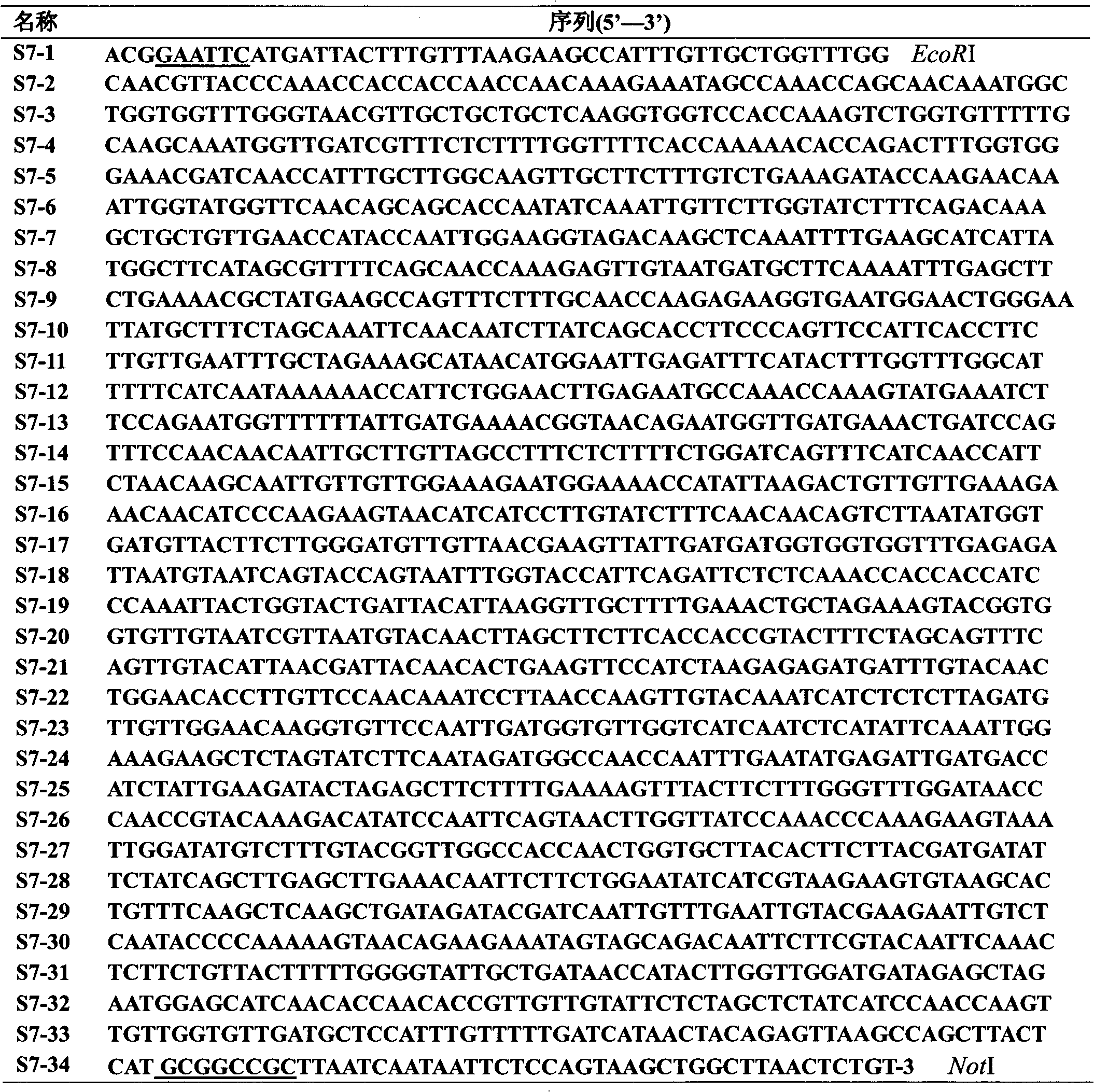Genes, plasmid, bacterial strain and application of xylanase
A xylanase and gene technology, applied in the application field of xylanase in pulp bleaching, can solve problems such as short half-life
- Summary
- Abstract
- Description
- Claims
- Application Information
AI Technical Summary
Problems solved by technology
Method used
Image
Examples
Embodiment 1
[0023] Embodiment 1 synthetic xylanase gene (S7-xyn)
[0024] The gene sequence and protein structure information of the endoxylanase gene S7-xyn of B.halodurans S7 comes from the National Center for Biotechnology Information (NCBI, http: / / www.ncbi.nlm.nih .gov / ) and the Protein Database (PDB, http: / / www.rcsb.org / pdb / search / advSearch.do).
[0025] According to the S7-xyn gene sequence published on NCBI, the sequence was optimized and replaced with codons preferred by Pichia pastoris, and then the optimized gene sequence was used with DNAWORKS software ( http: / / mcll.ncifcrf.gov / lukowski.html ), designed primers for whole gene synthesis, and designed 34 primers (that is, corresponding to SEQ ID NO 2~SEQ ID NO 35), among which the first primer S7-1 and the 34th primer introduced EcoRI and NotI enzymes respectively See Table 1 for the cleavage sites and enzyme cleavage protection bases.
[0026] Table 1 Primers for the whole gene synthesis of S7-xyn gene
[0027]
[0028] T...
Embodiment 2
[0056] Embodiment 2 prepares the plasmid containing the S7-xyn gene of 3 copies
[0057] The PCR product obtained in Example 1 was electrophoresed, the gel was cut to recover the target band at about 1200bp, the recovered product was digested with EcoRI and NotI, and the expression vector pPICZαA was also digested with EcoRI and NotI and recovered from the gel with T4DNA Ligase ligation. The 10 μL volume reaction system is as follows: 1 μL (50ng) of pPICZαA, 6 μL of fully synthetic gene product, 1 μL of 10×Buffer containing ATP, 1 μL of T4 DNA ligase, and ddH 2 O to make up to 10 μL. Slightly centrifuge, connect in a water bath at 16°C overnight, and transform into E.coli Top10, and screen positive transformants on LB plates containing Zeocin (bleomycin, 25 μg / mL). Randomly pick a certain amount of transformants, prepare a small amount of plasmids, and perform electrophoresis analysis after double digestion with restriction endonucleases EcoRI and NotI. It is estimated that...
Embodiment 3
[0060] Example 3 High expression of xylanase S7-xyn in Pichia pastoris
[0061] The pPICZαA-(XYN) of Example 2 that was completely linearized by the SacI enzyme by the LiCl method 3 Transformation of Pichia pastoris X33. The transformants were spread on MD plates and cultured at 30°C for 2 days. Transformants on the MD plate were inoculated on YPD plates containing Zeocin 100 μg / mL, 200 μg / mL, 300 μg / mL, 400 μg / mL, and 500 μg / mL, and cultured at 30°C for 3 days. Single clones were picked from the transformants appearing on the Zeocin-YPD plate with a higher concentration. Extract yeast genomic DNA as a template according to the Invitrogen operation guide, use the PCR primers of the target gene sequence for yeast genome PCR identification, the total reaction volume is 20 μL, and the amount of Taq enzyme is 2U. Take 2 μL of PCR products for 0.8% agarose gel electrophoresis identification.
[0062] Identification of the correct recombinant transformant X33 / pPICZαA-(XYN) 3 Fir...
PUM
 Login to View More
Login to View More Abstract
Description
Claims
Application Information
 Login to View More
Login to View More - R&D
- Intellectual Property
- Life Sciences
- Materials
- Tech Scout
- Unparalleled Data Quality
- Higher Quality Content
- 60% Fewer Hallucinations
Browse by: Latest US Patents, China's latest patents, Technical Efficacy Thesaurus, Application Domain, Technology Topic, Popular Technical Reports.
© 2025 PatSnap. All rights reserved.Legal|Privacy policy|Modern Slavery Act Transparency Statement|Sitemap|About US| Contact US: help@patsnap.com



